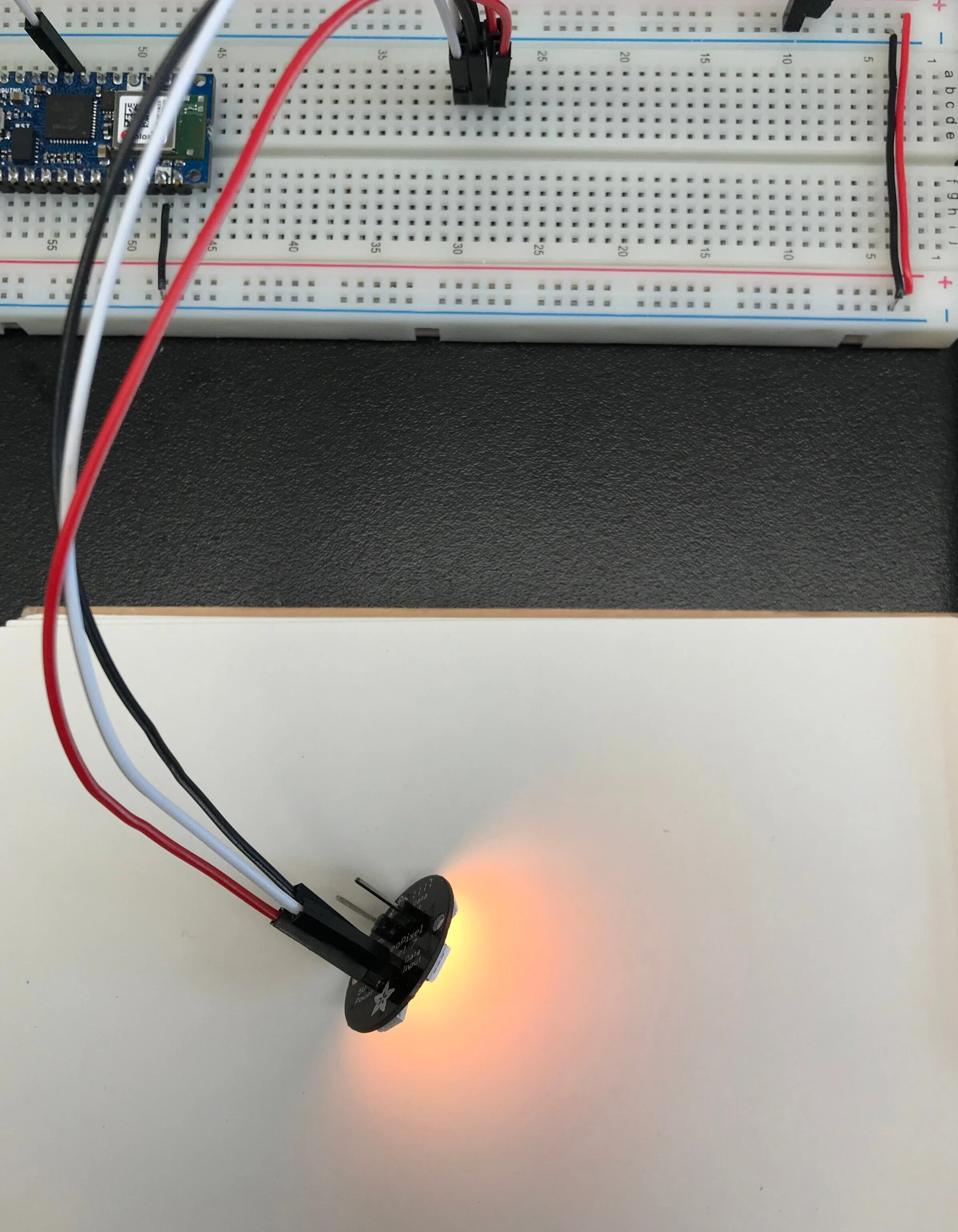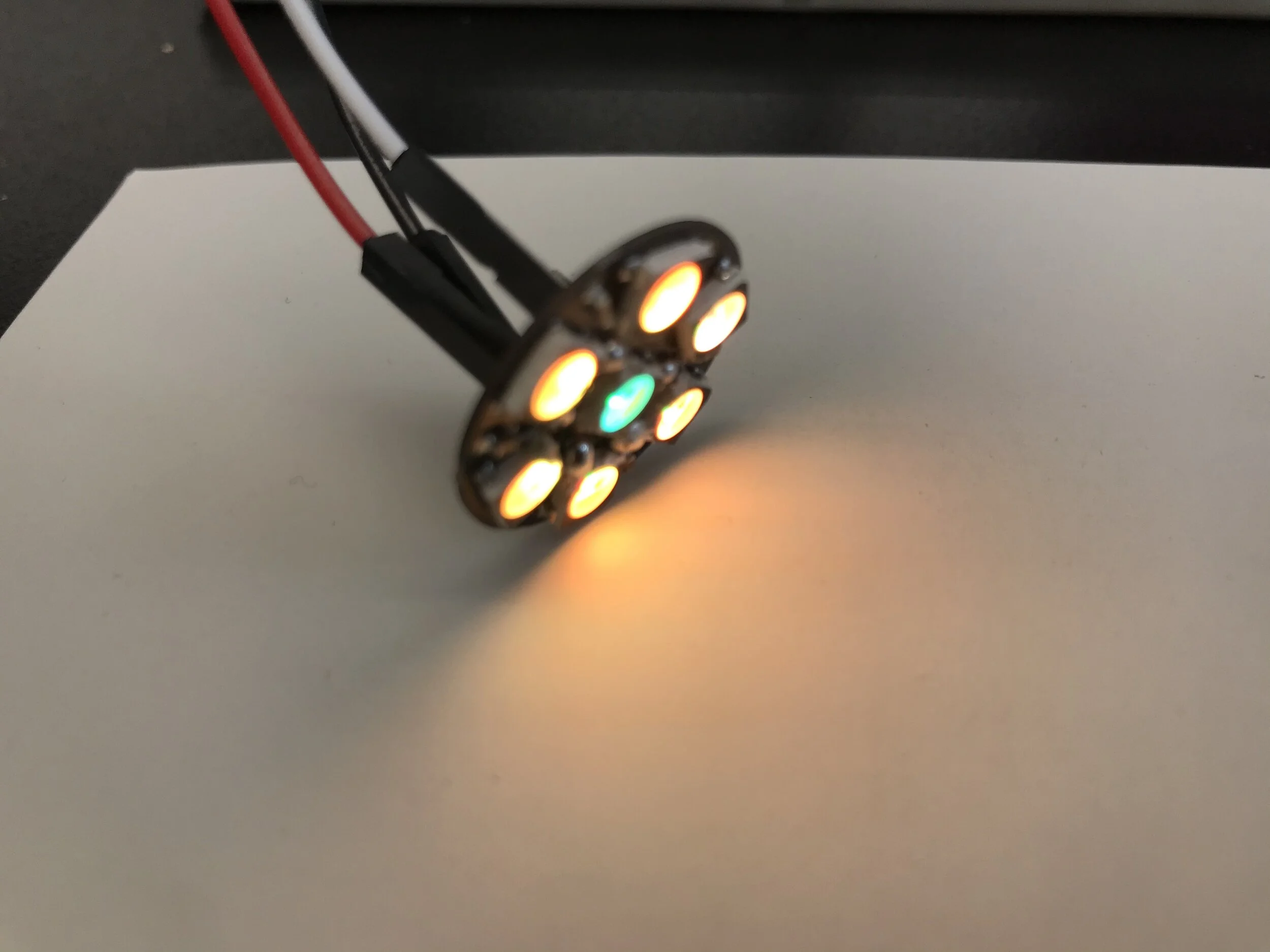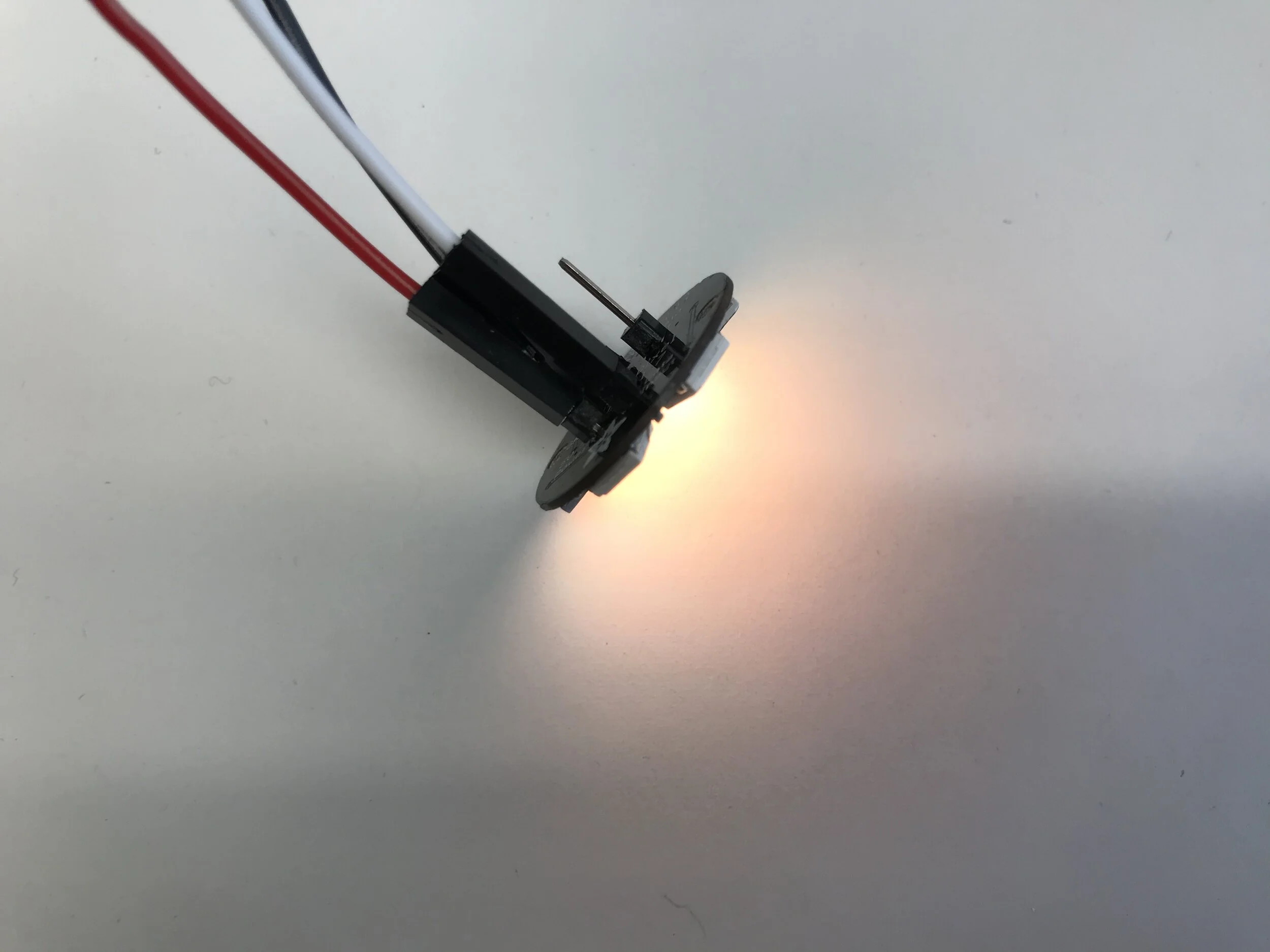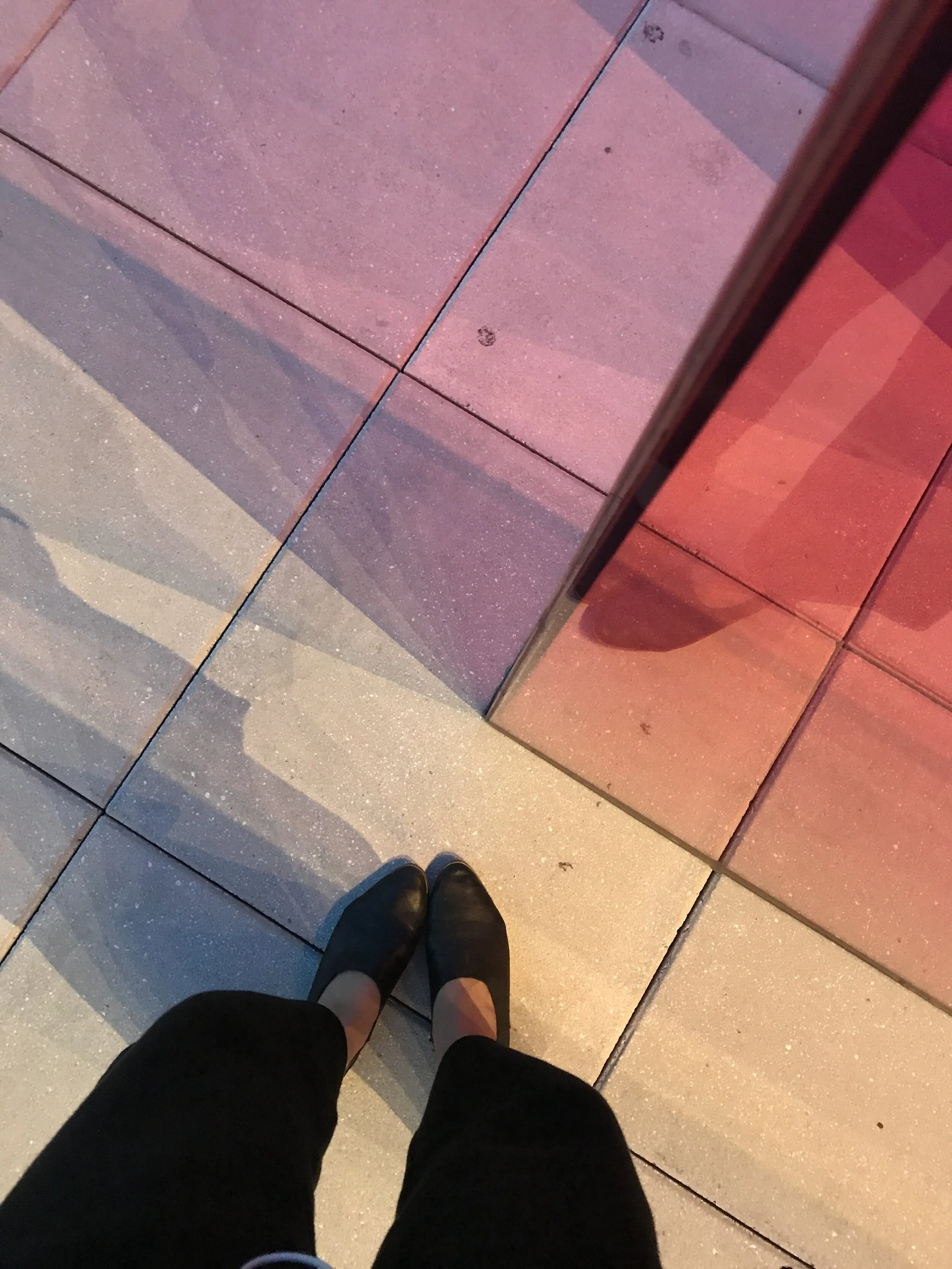Light and Interactivity week 2 : Artificial Candle
This week assignment is to imitate candle light using Neopixel LED which I started by taking some example codes from the color-converter library to see how things work — and the first thing that I need to understand is how HSI color work.
Here are some info and random internet captures that I got to help me understand how HSI color works.
From this information, seems like hue is the most meaningful value when saturation approaches 1 and less meaningful when saturation approaches 0 or when intensity approaches 0 or 1. And Intensity also somehow seems to limit the saturation value — which I think maybe that’s why it’s easier to play with the hue value in the sample codes more than saturation or intensity.
So when I started to make my own candle. First I try to set the hue value to around 60 to see is the color will be the yellowish that I like then adjust it a little bit with saturation and intensity.
turned out it’s yellowing pretty well :D
After that I try to imitated the candle by putting a little bit of blue in the center pixel and keep the outer ring pixels at the same hue values — which I ( personally ) think that it makes the overall lighting effect looks a little bit more “นวล” ( i don’t know english word for this softer, i guess? )
I also experiment a little bit with some other values after that, and here’s some conclusions I got :
the increment of the saturation and intensity didn’t effect the hue of the yellow color much compared to blue
the increment of intensity is also able to adjust the flickering pretty quick — strong wind
adjust the delay value higher or put random value in it — using noise?
test the lighting effect with enclosure while programmimg
Here is the video :
Light Observation : 02
Whitney Museum, June 2017
this photos were taken on the deck of the Whitney American Museum facing north - just a little bit before sunset in summer 2017
During that time, the museum was exhibited 4 red cube sculptures by Larry Bell for the 2017 Biennial. The cubes created and casted some interesting (and very cute! :D)layers of colored shadows on to the floor. The sculpture’s transparency and reflective material itself also able to capture the color of the sunset and overall environment creates a very spacial moment for the pieces.
